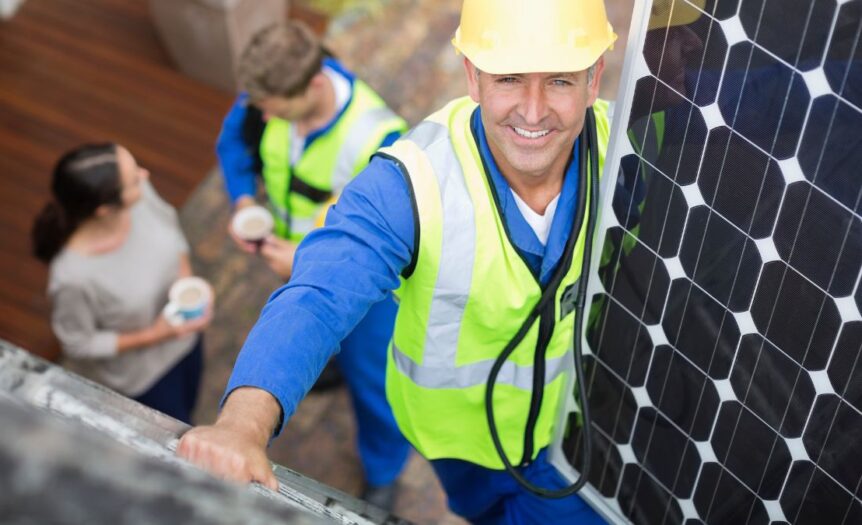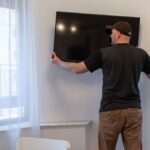Solar panels are a wonderful option for those who would like to use less electricity. Whether you want to focus on creating a greener, more sustainable home or just have a source of backup power during blackouts, solar energy is a smart choice for you. Getting solar panels on your home may seem challenging, but it’s a growing business, which makes this energy source more accessible for homeowners. Here are a few helpful tips for installing solar panels at home to make the process go more smoothly for you.
Prepare Your Roof
The advantage of solar panels is that they last a long time—but it’s a good idea to first ensure that your roof is up for the task of hosting them. It’s always a good idea to clean off your roof and double-check that everything is in good condition before you lay any solar panels down on top of it. You could get by with a normal cleaning if you recently redid your roof. However, if it’s been ten years since you replaced the shingles or recovered things, it may be worth taking care of that before putting down any panels.
Reduce Potential Obstacles
Installing solar panels can be challenging if you live in a particularly shady area. When you hire a professional to perform an inspection or install the panels for you, they can help you find areas where you can install your system while getting the most sunlight. It may be beneficial to you to remove certain obstructions, like trees and branches, that can get in the way. There are several ways to minimize solar panel system shading to get the most out of the sunlight. If your area is overly shady, you can combat these blockages through microinverters, which are a worthwhile investment.
Allow Breathing Space
A helpful tip for installing solar panels at home is to leave a little bit of space between the bottom of the panel and the top of your roof. A common misconception is that panels work better in the heat because they absorb more sun. However, panels absorb light, not heat, and they are typically less effective in hotter climates like Florida. Leaving a small gap under the panels allows for more natural airflow and allows them to cool down on hotter days.










 Deering Estate
Deering Estate
 Massage Envy South Miami
Massage Envy South Miami
 Calla Blow Dry
Calla Blow Dry
 My Derma Clinic
My Derma Clinic
 Sushi Maki
Sushi Maki
 Sports Grill
Sports Grill
 The Healthy Kitchen
The Healthy Kitchen
 Golden Rule Seafood
Golden Rule Seafood
 Malanga Cuban Café
Malanga Cuban Café

 Kathleen Ballard
Kathleen Ballard
 Panter, Panter & Sampedro
Panter, Panter & Sampedro
 Vintage Liquors
Vintage Liquors
 The Dog from Ipanema
The Dog from Ipanema
 Rubinstein Family Chiropractic
Rubinstein Family Chiropractic
 Your Pet’s Best
Your Pet’s Best
 Indigo Republic
Indigo Republic




 ATR Luxury Homes
ATR Luxury Homes


 2112 Design Studio
2112 Design Studio
 Hamilton Fox & Company
Hamilton Fox & Company
 Creative Design Services
Creative Design Services
 Best Pest Professionals
Best Pest Professionals
 HD Tree Services
HD Tree Services
 Trinity Air Conditioning Company
Trinity Air Conditioning Company
 Cisca Construction & Development
Cisca Construction & Development
 Mosquito Joe
Mosquito Joe
 Cutler Bay Solar Solutions
Cutler Bay Solar Solutions


 Miami Royal Ballet & Dance
Miami Royal Ballet & Dance
 Christopher Columbus
Christopher Columbus
 Pineview Preschools
Pineview Preschools
 Westminster
Westminster
 Carrollton
Carrollton
 Lil’ Jungle
Lil’ Jungle
 Frost Science Museum
Frost Science Museum
 Palmer Trinity School
Palmer Trinity School
 South Florida Music
South Florida Music
 Pinecrest Orthodontics
Pinecrest Orthodontics
 Dr. Bob Pediatric Dentist
Dr. Bob Pediatric Dentist
 d.pediatrics
d.pediatrics
 South Miami Women’s Health
South Miami Women’s Health

 The Spot Barbershop
The Spot Barbershop
 My Derma Clinic
My Derma Clinic




 Miami Dance Project
Miami Dance Project

 Rubinstein Family Chiropractic
Rubinstein Family Chiropractic
 Indigo Republic
Indigo Republic

 Safes Universe
Safes Universe
 Vintage Liquors
Vintage Liquors
 Evenings Delight
Evenings Delight





 Atchana’s Homegrown Thai
Atchana’s Homegrown Thai
 Baptist Health South Florida
Baptist Health South Florida

 Laser Eye Center of Miami
Laser Eye Center of Miami
 Visiting Angels
Visiting Angels
 OpusCare of South Florida
OpusCare of South Florida

 Your Pet’s Best
Your Pet’s Best





 HD Tree Services
HD Tree Services
 Hamilton Fox & Company
Hamilton Fox & Company


 Creative Design Services
Creative Design Services